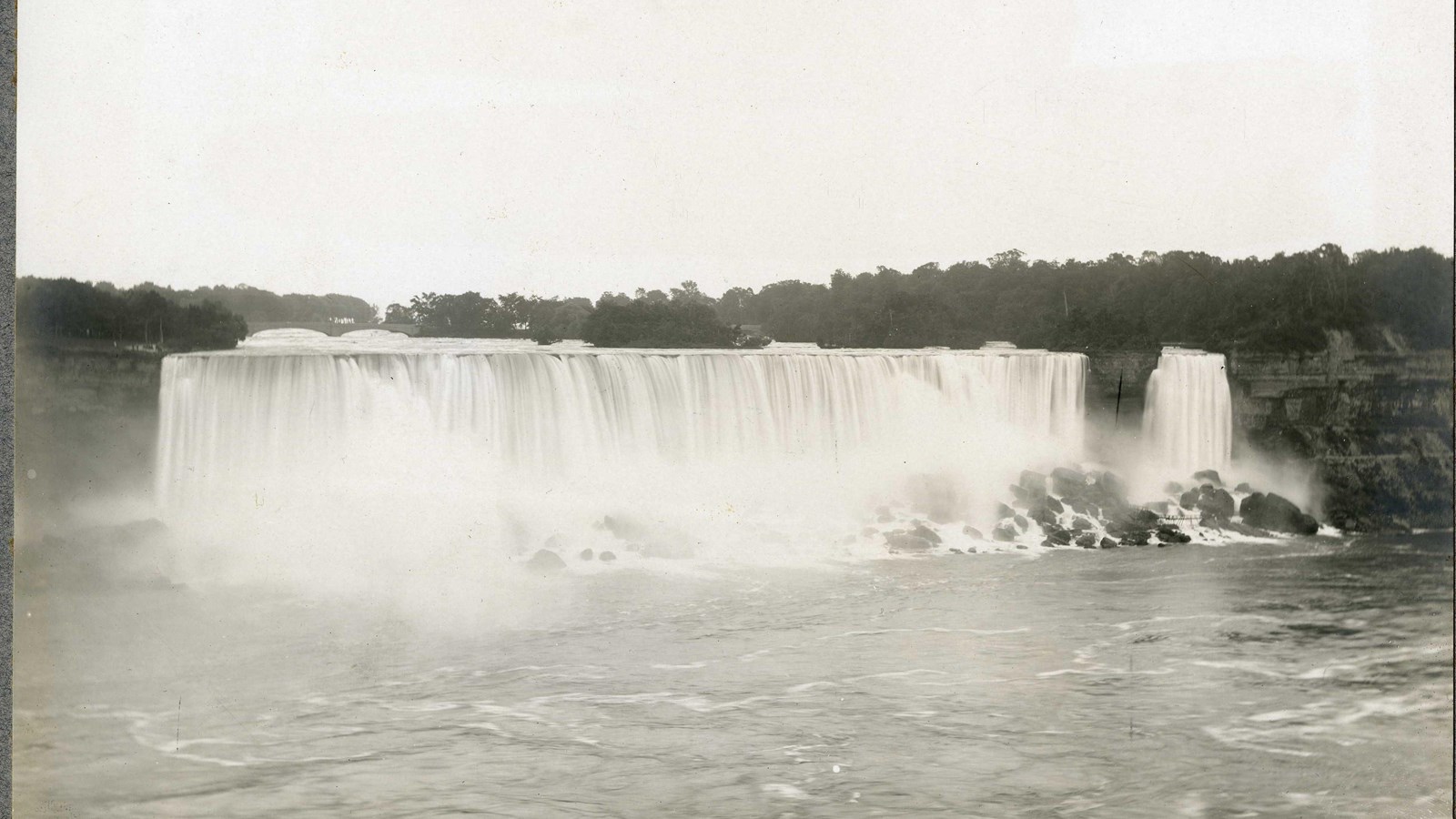Last updated: June 8, 2024
Place
Niagara Falls

Olmsted Archives
Quick Facts
Location:
Niagara Falls, NY
Significance:
Olmsted Designed Landscape
MANAGED BY:
Though Frederick Law Olmsted surely didn’t loose it when he first saw Niagara Falls, he was shocked by the landscape, upon which were “mills and factories everywhere, hovels, fences and patent medicine signs”. The Industrial Revolution of the early 19th century had taken the natural beauty of Niagara Falls and abused it, with buildings going up along the river to harness its power.
Olmsted took his first trip to Niagara Falls in August 1869, while working on the Buffalo parks and parkway system. He was accompanied by William Dorsheimer, the district attorney for northern New York and the man who headed the Buffalo parkways commission as well as H.H. Richardson, a friend of Olmsted’s who was working on Dorsheimer’s estate. All three men were appalled with this marvelous view of nature being obscured.
In the late 1860s, a small band of early environmentalists who were concerned over the river’s decreasing flow, founded the Free Niagara movement. Intellectuals like Ralph Waldo Emerson, Henry Wadsworth Longfellow, and Charles Darwin joined Olmsted in the Free Niagara movement. The movement believed that the natural beauty of the land surrounding Niagara Falls should be protected from commercial exploitations and remain free to the public.
The breakthrough at Niagara Falls came in 1883 when Dorsheimer’s close friend, Grover Cleveland, became governor of New York, and signed a bill calling for the establishment of a state park at Niagara. The Niagara Appropriations Bill was signed into law in 1885, creating the Niagara Reservation. Park commissioners first began by clearing out structures that had blocked views along the upper rapids, limiting the number of factories in the areas downstream.
Olmsted and Vaux began the landscaping that gives the American side of Niagara Falls its distinct character— ambling walkways and idyllic glades for visitors to contemplate the beauty of nature. Though the view looking into Canada has changed over time, if you’re willing to work for it, you can find certain spots where you’d see the same view Olmsted first did.
Source: "Niagara Reservation," The Cultural Landscape Foundation
For more information and primary resources, please visit:
Olmsted Research Guide Online
Olmsted Archives on Flickr
Olmsted Online
Olmsted took his first trip to Niagara Falls in August 1869, while working on the Buffalo parks and parkway system. He was accompanied by William Dorsheimer, the district attorney for northern New York and the man who headed the Buffalo parkways commission as well as H.H. Richardson, a friend of Olmsted’s who was working on Dorsheimer’s estate. All three men were appalled with this marvelous view of nature being obscured.
In the late 1860s, a small band of early environmentalists who were concerned over the river’s decreasing flow, founded the Free Niagara movement. Intellectuals like Ralph Waldo Emerson, Henry Wadsworth Longfellow, and Charles Darwin joined Olmsted in the Free Niagara movement. The movement believed that the natural beauty of the land surrounding Niagara Falls should be protected from commercial exploitations and remain free to the public.
The breakthrough at Niagara Falls came in 1883 when Dorsheimer’s close friend, Grover Cleveland, became governor of New York, and signed a bill calling for the establishment of a state park at Niagara. The Niagara Appropriations Bill was signed into law in 1885, creating the Niagara Reservation. Park commissioners first began by clearing out structures that had blocked views along the upper rapids, limiting the number of factories in the areas downstream.
Olmsted and Vaux began the landscaping that gives the American side of Niagara Falls its distinct character— ambling walkways and idyllic glades for visitors to contemplate the beauty of nature. Though the view looking into Canada has changed over time, if you’re willing to work for it, you can find certain spots where you’d see the same view Olmsted first did.
Source: "Niagara Reservation," The Cultural Landscape Foundation
For more information and primary resources, please visit:
Olmsted Research Guide Online
Olmsted Archives on Flickr
Olmsted Online
